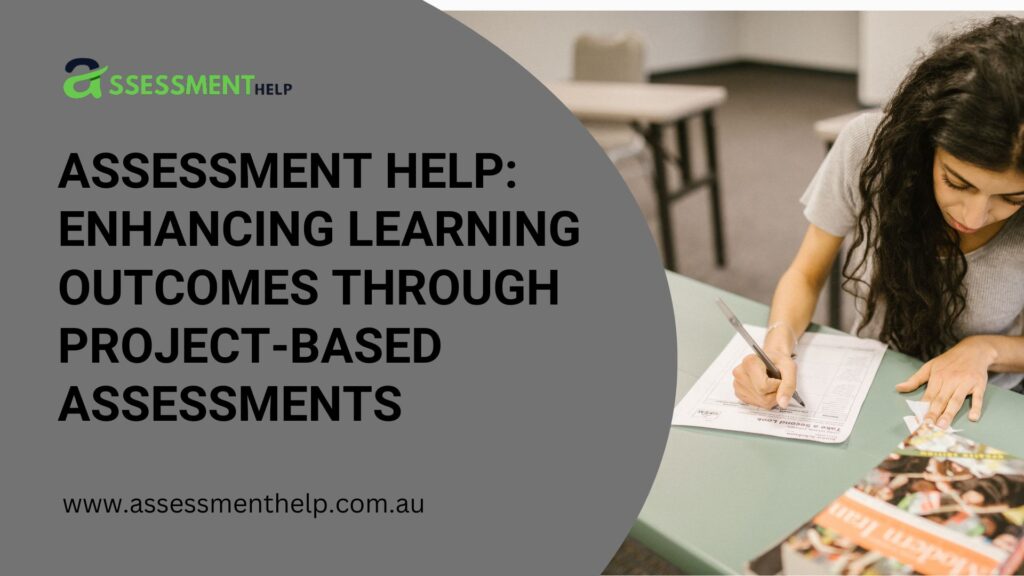In today’s educational landscape, the role of assessments goes beyond mere evaluation; it extends to shaping the learning process itself. Traditional assessments often focus on testing memorization and comprehension through exams and quizzes. However, educators are increasingly turning towards project-based assessment help to foster deeper understanding, creativity, and critical thinking among students. This shift marks a significant evolution in educational practices, aiming to align assessment methods more closely with real-world skills and application.
Understanding Project-Based Assessments
Project-Based Learning (PBL) has gained traction as a pedagogical approach that integrates meaningful tasks into the curriculum, allowing students to explore real-world problems and challenges. Unlike conventional assessments, which primarily measure how well students recall information, project-based assessments require learners to apply knowledge, collaborate with peers, and engage in hands-on activities that mimic professional environments.
Key Benefits of Project-Based Assessments
- Promoting Deeper Understanding: By immersing students in projects that mirror real-life scenarios, educators encourage them to explore concepts in-depth. This approach not only enhances comprehension but also cultivates a deeper connection to the subject matter.
- Fostering Critical Thinking Skills: Projects often present complex problems that require analytical thinking and problem-solving. Through these assessments, students learn to think critically, evaluate evidence, and formulate innovative solutions.
- Encouraging Collaboration and Communication: Many projects involve teamwork, fostering collaboration skills essential for success in diverse professional settings. Students learn to communicate effectively, negotiate differences, and leverage collective strengths.
- Developing Creativity and Innovation: Project-based assessments encourage creativity by allowing students to devise unique solutions to open-ended problems. This fosters innovation and prepares learners to tackle novel challenges creatively.
Implementing Project-Based Assessments: Best Practices
- Align Assessments with Learning Objectives: Ensure that project-based assessments are aligned with educational goals and standards. Clearly define learning outcomes and assessable criteria to maintain rigor and relevance.
- Provide Clear Guidelines and Support: Offer detailed guidelines, resources, and scaffolding to support students throughout the project. Establish checkpoints for feedback and revision to facilitate continuous improvement.
- Encourage Student Choice and Ownership: Allow students to select project topics or formats that align with their interests and strengths. Empower them to take ownership of their learning journey, promoting intrinsic motivation.
- Facilitate Reflection and Evaluation: Incorporate opportunities for students to reflect on their learning experiences. Encourage self-assessment and peer evaluation to promote metacognitive awareness and accountability.
Steps in Implementing PBAs
- Planning and Preparation: Begin with clear learning goals and plan the project timeline, resources needed, and assessment criteria.
- Launch and Student Engagement: Introduce the project to students, emphasizing its relevance and potential impact.
- Support and Guidance: Provide ongoing support and guidance throughout the project, facilitating discussions, and addressing challenges.
- Assessment and Feedback: Use rubrics to assess student work, providing constructive feedback to support learning and growth.
- Reflection and Evaluation: Encourage students to reflect on their learning process and evaluate their own growth and achievements.
Challenges and Considerations
While project-based assessments offer numerous benefits, they also present challenges that educators must address:
- Time Constraints: Designing and implementing projects can be time-intensive, requiring careful planning and coordination.
- Assessment Consistency: Ensuring fairness and consistency in evaluating diverse projects can pose challenges. Establish clear assessment criteria and rubrics to maintain objectivity.
- Resource Allocation: Projects may require access to specific resources or technology. Address resource disparities to ensure equitable learning opportunities for all students.
- Assessment of Individual Contributions: In group projects, assessing individual contributions fairly can be complex. Implement strategies such as peer evaluations and differentiated roles to address this issue.
Case Studies: Success Stories
- STEM Education: Incorporating project-based assessment writing help in STEM disciplines has been shown to increase student engagement and proficiency in applying scientific principles to real-world problems.
- Arts and Humanities: Projects in arts and humanities subjects foster creativity, cultural awareness, and critical interpretation skills among students, preparing them for diverse career paths.
- Social Sciences: Project-based assessments in social sciences encourage students to explore complex societal issues, analyze data, and propose evidence-based solutions, promoting civic engagement and global awareness.
Conclusion
Project-based assessments represent a transformative approach to evaluation, emphasizing skills crucial for success in the 21st century. By shifting from traditional testing methods to project-based learning, educators can enhance learning outcomes, nurture creativity, and prepare students for future challenges. While challenges exist, the benefits of project-based assessments outweigh the drawbacks, making it a valuable strategy in modern education. As we continue to innovate in pedagogy, integrating meaningful projects into assessments will play a pivotal role in shaping the next generation of learners and leaders.


